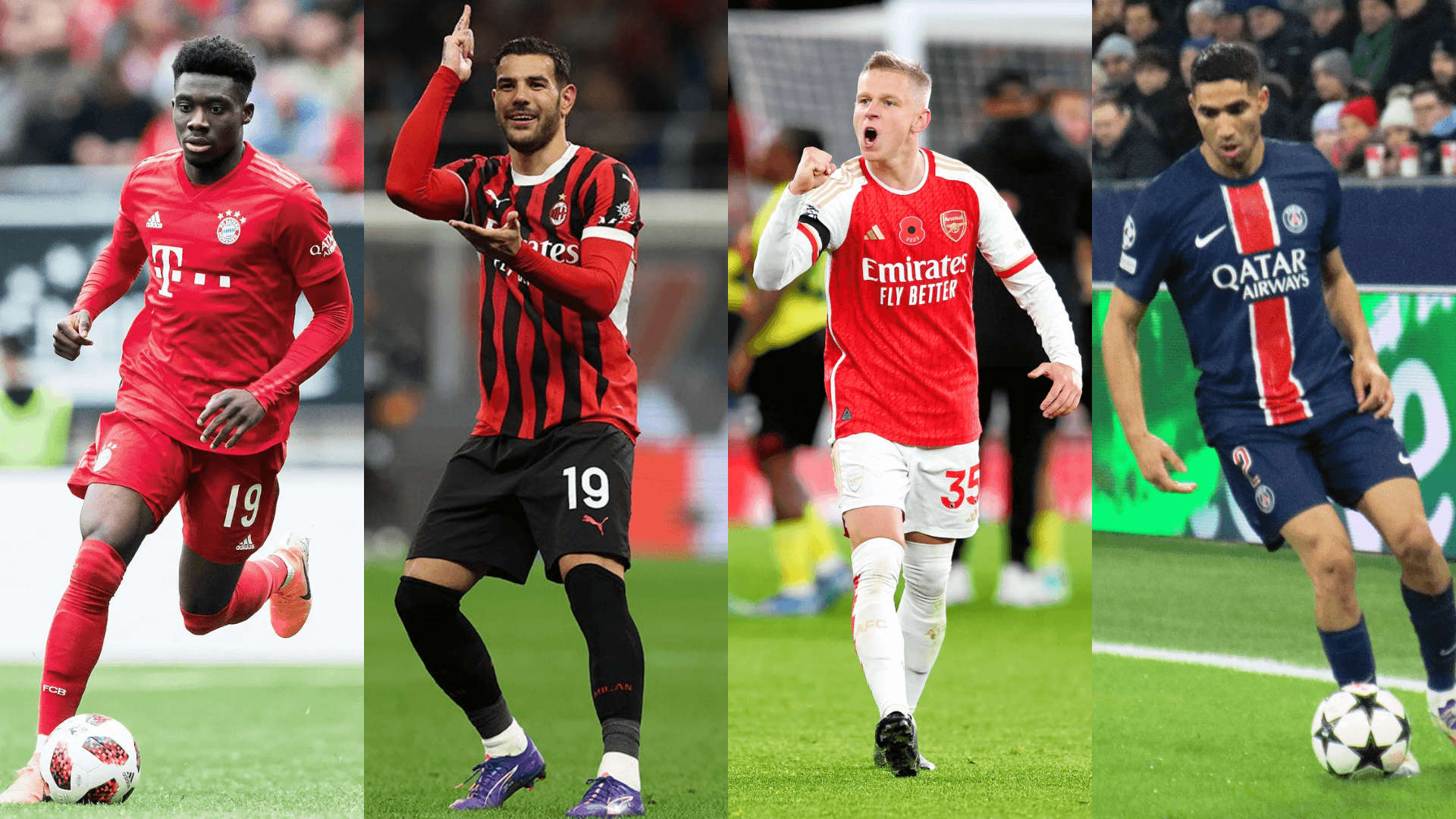Modern football changed the role of fullbacks. Joao Cancelo does not get the ball at the touchline but instead close to the center of the penalty area, darting his head over his shoulder, like the tried and true No. 6. Just a moment after that, Achraf Hakimi takes off like a rocket down the right wing in a PSG shirt and pockets his way dwelling on the touchline. They are both fullbacks. Both do not play the position alike.
The fullback position in modern football has changed from a role functionally describing the wide defensive player into one of the most tactically challenging positions in football. The fullback used to be judged on stamina, overlapping runs, and crosses into the box, but a modern fullback must now be capable of thinking several phases of the game ahead of them—as playmaker, press trigger, or all-purpose midfielder.
From Touchline to Centre Circle
Twenty years ago, fullbacks were mainly described as wide and athletic. Remember Cafu bombing down the flank on the right side of the field, Ashley Cole smothering attackers on the wide wings, or Roberto Carlos putting the thunderbolts with his long-range shooting? The plan was very straightforward: wide defending, overlapped winger, in the ball.
This was followed by the Guardiola effect. It was under Jupp Heynckes at Bayern Munich and subsequently at Manchester City that Philipp Lahm was converted into an inverted full-back, moving inside to become a midfielder when in possession. He was not a short-distance runner. He was a metronome of modern football.

“I don’t need fast fullbacks,” Guardiola once said. “I need intelligent ones.”
It was a quiet revolution in football, and it changed everything.
The Inverted Full-Back
The inverted full-back is one of the more popular tactics to be utilized by elite clubs at the moment. These are the players that move to the center when the team has possession to aid in overloading midfield, maintaining shape during the transition, and recycling possession when defending.
Joao Cancelo and Oleksandro Zinchenko are prototypes in modern football. Their heatmaps tend to resemble central midfielders compared to defenders. They assist their teams to take up a 3-2-5 formation in offense with a three-man backline anchored by two deep fullbacks/midfielders.

“It’s about recognizing the moment,” Guardiola said of Cancelo in 2022. “When to move inside, when to support the pivot, when to stay wide. He reads it perfectly.”
Width, Press, and Chaos
Not every fullback of modern football has, however, replaced chalk with central command. In the case of most teams, the conventional wide runner paradigm remains alive, especially in terms of counter-attacking and vertical tactics.
Achraf Hakimi in PSG and Jeremie Frimpong in Bayer Leverkusen are ones who provide raw pace and attacking energy. They do not also attempt to dictate tempo but serve to drag out the opponent, get to the final third, and break defensive lines. In the same system, Frimpong, in Xabi Alonso, tends to be like a wing-back, although he is allowed in the box at times as an inverted forward with a defensive role.
Another instance would be Alphonso Davies at Bayern Munich. Bayern can transition by the mere speed and ability to dribble the ball that he possesses. They count high progressive carries and crosses per 90, despite having less injury time on the ball in the center of the park.
The variety is stark—and deliberate.
Check out Alphonso Davies’ stats
One Role, Many Layers
The emergence of hybrid fullbacks in modern football, the players who position differently in the middle of the game or as the tactics dictate, can be seen as the most interesting as well.
An example of such a trend in contemporary football is Trent Alexander-Arnold. A conventional right-back who used to do whipped crosses, he now routinely switches to the opposite side and plays as a deep-lying playmaker at Liverpool. He might even begin higher and drift inwards in the buildup when faced with less capable opposition.

Meanwhile, Theo Hernandez alternates between the traditional overlaps and the middle rushes, depending on how Milan plays. Ben White, an Arsenal player, hardly keeps overlap at all, but he also drops in as a 3rd center-back in the build-up, allowing Zinchenko to invert to the left.
This adaptability reflects a shift in coaching logic: fullbacks are no longer set in a mold—they are tactical instruments, customized to fit a system.
Rising Stars
The future generation is already experiencing this complexity. All through Europe, fullbacks, and increasingly younger ones, are being coached not only to be quick or powerful but also intelligent on the field.
Milos Kerkez (Liverpool/Hungary) has attacking instincts that are aggressive as well; however, he rebounds back rather fast in order to come back to the defensive line. His move to Liverpool would actually assist the Reds in filling in the gap left by Trent Alexander-Arnold.

Tottenham’s Destiny Udogie is a powerful player operating well in the inside channels, giving smart passing directions.

The 20-year-old Rico Lewis (Manchester City) is already used as an inverted full-back, who often has to initiate attacks around his pivot.

The Smartest Position in Modern Football?
The report from FBref stated that in the 2023-24 season, full-backs participated in the buildup to 38 percent of all goals in Europe’s top leagues of five countries. The anticipated assist (xA) of full-back players such as Frimpong (0.22 xA/90) and Alexander-Arnold (0.30 xA/90) compares to that of creative midfielders.
But stats tell only part of the story.
The contemporary full-back needs to learn how to produce transitions, tempo, positional rotations, and one-on-one defense play in the process, sometimes in the same five-minute period. It is an office that calls for as much tactical sagacity as blistering speed in modern football.
“Full-backs are playmakers now,” said Julian Nagelsmann last season. “Sometimes they’re more important than your No. 10.”

